European Defense Stocks Take a Nosedive
Peace is bad for business
We’ve previously covered in extensive detail the relationship between the European defense industry and the war in Ukraine. I recommend reading the piece linked below first for a primer on this subject, if you haven’t.
Why is Europe All-In on Ukraine?
The German economy is in recession. Manufacturing has imploded, particularly in the crucial automotive sector, which has shed hundreds of thousands of jobs since 2022, and lost a staggering third of its production volume since 2018. August saw the biggest drop
In the midst of sudden and chaotic peace negotiations between the US, EU, Ukraine, and Russia, astute observers have been quick to dismiss the likelihood of a negotiated settlement happening any time soon. While this cynicism has a solid grounding in the lengthy legacy of failed negotiations in the war so far, European markets are reacting as if a conclusion to – or at the very least a shift in – the war is a real possibility.
The first rumors of potential US/Russia negotiations began to spread around November 14th. Subsequent reporting from Bloomberg revealed that a secret meeting took place between Steve Witkoff, Russian Special Presidential Envoy on Foreign Investment Kirill Dmitriev, and – interestingly – Jared Kushner in Miami in October. As the negotiations continued, US Secretary of State Marco Rubio was excluded, while JD Vance ally and US Army Secretary Dan Driscoll was brought in. A fundamental shift on Ukraine policy within the Trump administration seems to have occurred.
European markets reacted quickly to the rumors. The STOXX European Aerospace and Defense index (SXPARO), which tracks a basket of major defense stocks within the EU, began to slide on the 14th. The decline accelerated on the 19th with the appearance of rumors that the US proposal came with a “deadline” issued to Zelensky to sign a deal by the 28th. While the negotiations have now apparently devolved into a series of increasingly unrealistic European and Ukrainian counter-proposals, there’s been no reversal in this trend. The EUAD ETF, which closely tracks the index, has posted a 12% loss in the past month. This is a larger drop than the fund has experienced since the beginning of the war in Ukraine, and comes on the back of a 5% decline in the first half of October.
There’s reason to think that the markets are reacting to more than just the latest rounds of (possibly futile) peace negotiations.
Pump and Dump
Over the past few months, major European defense concerns have announced the signing of letters of intent with the Ukrainians for defense deals of unprecedented scale. The first of these came in late October, as Swedish Prime Minister Ulf Kristersson held a joint press conference with Zelensky to unveil a potential purchase deal through which Saab AB would provide the Ukrainians with up to 150 new Gripen E multirole fighter aircraft. This announcement raised eyebrows for several reasons.
Ukraine's Looming Budgetary Crisis
European political and financial leaders spent much of this past week deliberating on the possibility of making the $137 billion (or $208 billion, no one seems to be able to say for sure) in Russian assets held by Euroclear Bank available to Ukraine, which is in desperate need of large infusion of cash. The Ukrainians’ hopes were dashed, however, when t…
First, if the deal were to come to fruition, it would be the largest defense procurement order in Sweden’s history. The value of just the aircraft, discounting maintenance contracts with Saab, would well exceed $20 billion. With Ukraine facing a $60 billion budget shortfall for 2026 alone, they do not have the means to pay for the aircraft, even in small installments. Swedish officials have made vague references to using the windfall from the deadlocked reparations loan to finance the deal, but as we’ve covered previously, the loan isn’t even enough to fund Ukraine’s current levels of expenditure, let alone a new $20 billion procurement contract.
The Swedes have tried to build support for EU funding for the deal by suggesting production could take place across the continent, but with EU budgets already stretched to their limits, it’s not clear where the money would come from.
Second, the rate of delivery for these aircraft seems wholly disconnected from the realities of the war itself. Swedish officials have suggested that the deliveries will only take place “after the war ends,” while “limited access” to older Gripen C/D airframes may be provided in the meantime. With current production rates of the aircraft being only in the low teens a year, delivering 150 of them would take as long as 15 years, according to the Swedes. Messaging from Zelensky seems disconnected from these statements – he says he hopes Ukraine will be operating the fighter “as soon as next year.”
Saab posted a sharp initial 7.8% gain as the letter of intent was announced, but that gain has now been erased, with a 15% loss month over month, as its share price declined precipitously with the announcement of renewed peace negotiations. This is unfortunate news for Saab, which has faced a long string of setbacks in Gripen sales. Without the Ukraine deal becoming a reality, the future financial success of the platform is uncertain. The Swedes are currently lobbying the Canadian Air Force to acquire the Gripen E.
Not to be outdone, the French announced on the 17th the signing of a letter of intent for a similar deal to provide Ukraine with up to 100 Rafale F4 fighters. If the prospect of one procurement deal for aircraft valued in the tens of billions seems implausible, the simultaneous procurement of two incompatible platforms defies belief. Just like Saab, Dassault estimates it will take at least a decade to deliver the quantity of airframes specified in the letter of intent, with the first deliveries being years away. And just like the Swedes, the French point to the reparations loan scheme as the way to finance the deal.
These two announcements, which involve no obligations for any parties involved, and only constitute vague commitments to explore future deals, paint a strange picture of the European defense industry. France and Sweden are now competing for the same potentially non-existent pool of funding. The Ukrainians are signaling their intent and ability to place $40 billion or more of procurement orders while being steadily cut off from debt financing and facing a $60 billion hole in their 2026 government budget. Prior transfers of western fighter jets have failed to gain them a noticeable operational or strategic advantage. And operating such a large fleet of hundreds of incompatible fighter aircraft would place enormous strain on their finances, even in peacetime.
Both Dassault and Saab face stiff competitive pressure from the F-35 program, as rising manufacturing costs in Europe reduce the low-cost edge platforms like the Gripen and Rafale once had. US political influence and economy of scale has left bleak prospects for both firms in competing with the F-35. Saab recently pitched to the Canadians that local production of the Gripen could create 10,000 new jobs in Canada – an absurd prospect considering localized production in Brazil has created only a few hundred.
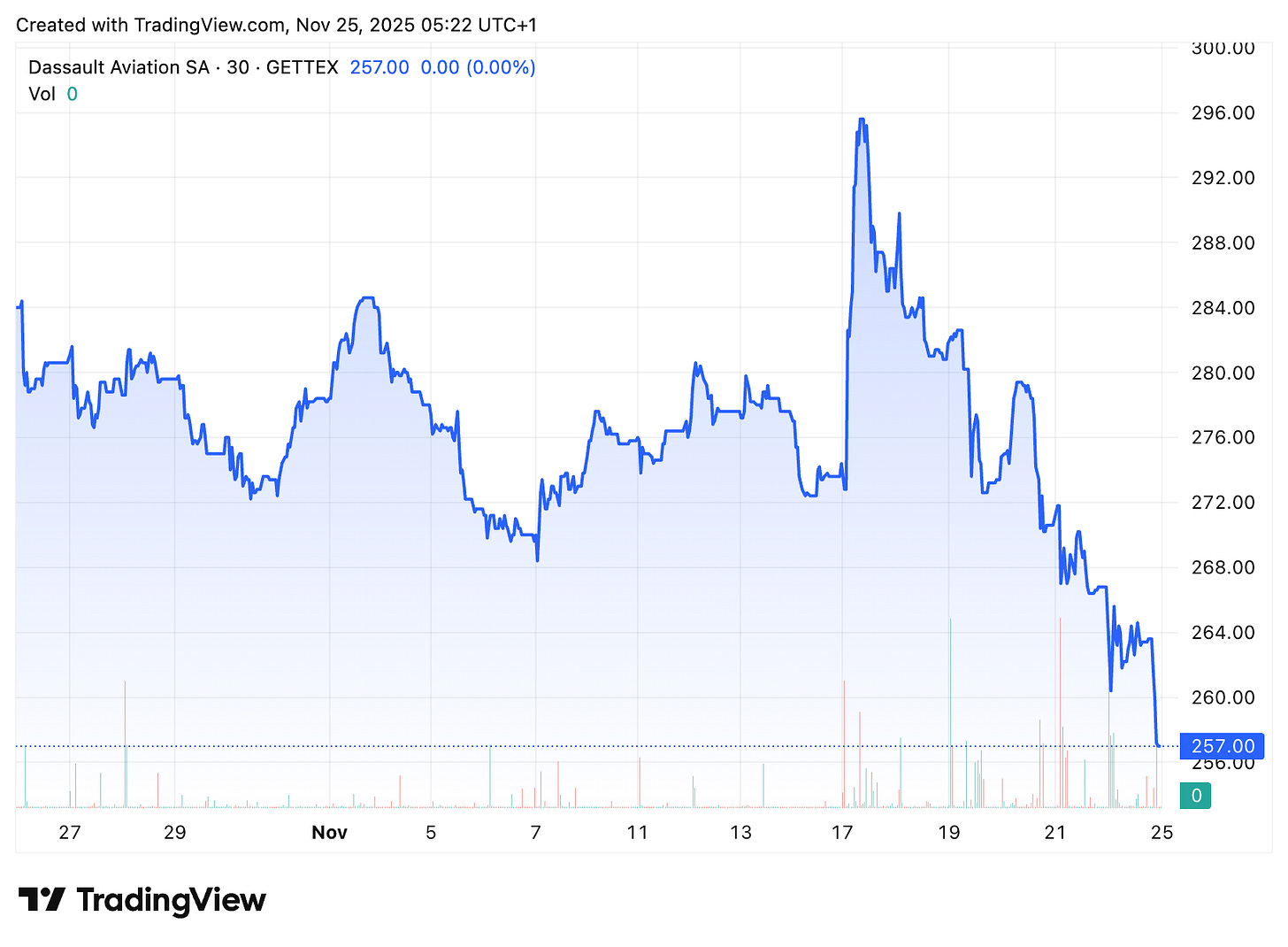
Though it hasn’t been stated publicly, the Europeans and the Ukrainians fully understand that these deals are fantasies only remotely achievable through the reparations loan, and even then are unlikely. But they announced them all the same in the hopes of boosting the public perception of their domestic defense industries. It’s also possible they’re using these deals to pressure other EU member states into funding the reparations loan, banking on promises of joint-production across the Union.
“There’s no money in the budget, period. Not happening. If the whole Russian assets deal doesn’t go ahead, these deals don’t go ahead.” - Richard Aboulafia, managing director of AeroDynamic Advisory (Kyiv Independent)
Eurobonds, Budget Gaps, and War Until 2031
Today’s post will serve as an update to my recent pieces on the European military-industrial complex, the Ukrainian budgetary crisis, and the energy attrition war. In an amazing coincidence, today’s issue of The Economist addresses all three of these subjects with a quartet of remarkable articles. These pieces broadly agree with facts of the situation a…
For their part, the Ukrainians get an optimistic headline that grants some temporary confidence to their less observant supporters, who often fail to read the fine print. Both Saab and Dassault have also suggested establishing joint production facilities in Ukraine, which plays well in the Ukrainian media. But Ukrainian sources have been less than triumphant about these potential deals.
“From the political leadership’s point of view, this looks like an attempt to offset internal corruption scandals with big foreign-policy signings. These are not shells or equipment that can protect us today. Strategically, yes, it’s important. But does it protect us now? No.” - Mykola Davydiuk (Kyiv Independent)
Of all the European defense contractors to benefit from the war in Ukraine, Rheinmetall has benefitted the most. We’ve previously covered how 2,000% gains since the beginning of the war have catapulted the German firm into “insanely overvalued” territory. German plans for unprecedented deficit defense spending justified by the war in Ukraine undergird its success, and so it’s more susceptible to changing sentiment around the war than any of the other companies we could discuss here. Accordingly, it’s posted a 16% loss in the week since the US peace proposal was unveiled.
While the latest peace negotiations are clearly responsible for the sudden downturn in European defense markets, they’re likely not the sole causative factor, in and of themselves. As we’ve covered extensively over the past few months, the Ukrainians are facing an all-time peak in battlefield, financial, political, and infrastructural pressure. The markets may be taking the negotiations not as a likely conclusion to the war, but a sign that the writing is on the wall for Ukraine.
There’s little reason to think the Europeans will execute a total reversal in their plans for debt-driven defense spending. An ambiguous Russian threat can remain even if the war concludes, and pressure from the US to meet new NATO spending targets will ensure governments continue to dump cash into defense concerns.
However, the mind-boggling overvaluation of firms like Rheinmetall will likely not survive a conclusion to the war, as a negotiated settlement could force the EU to scale back some of its spending. Other defense firms like Saab (+935%), Leonardo (+833%), BAE Systems (+485%), and Thales (+324%) have all posted enormous gains since 2022, but each has also lost more than 10% of its value in the past week. Unless the Europeans can ensure the war continues for the long term, these defense companies will have a long way to fall.

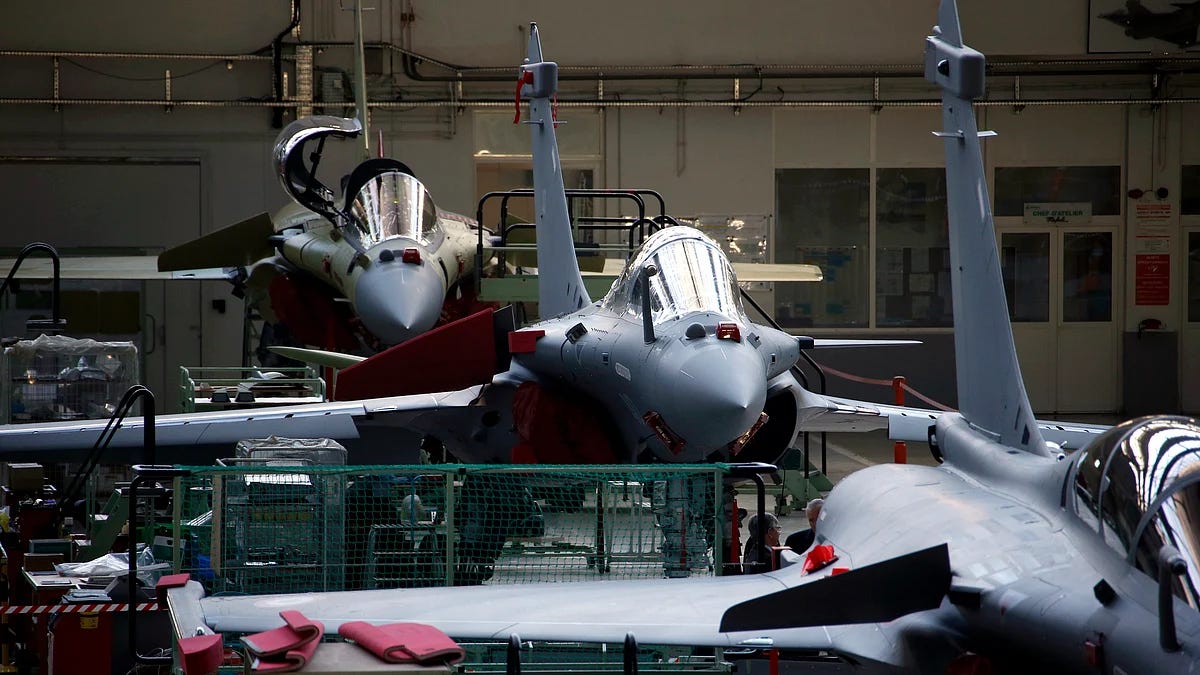

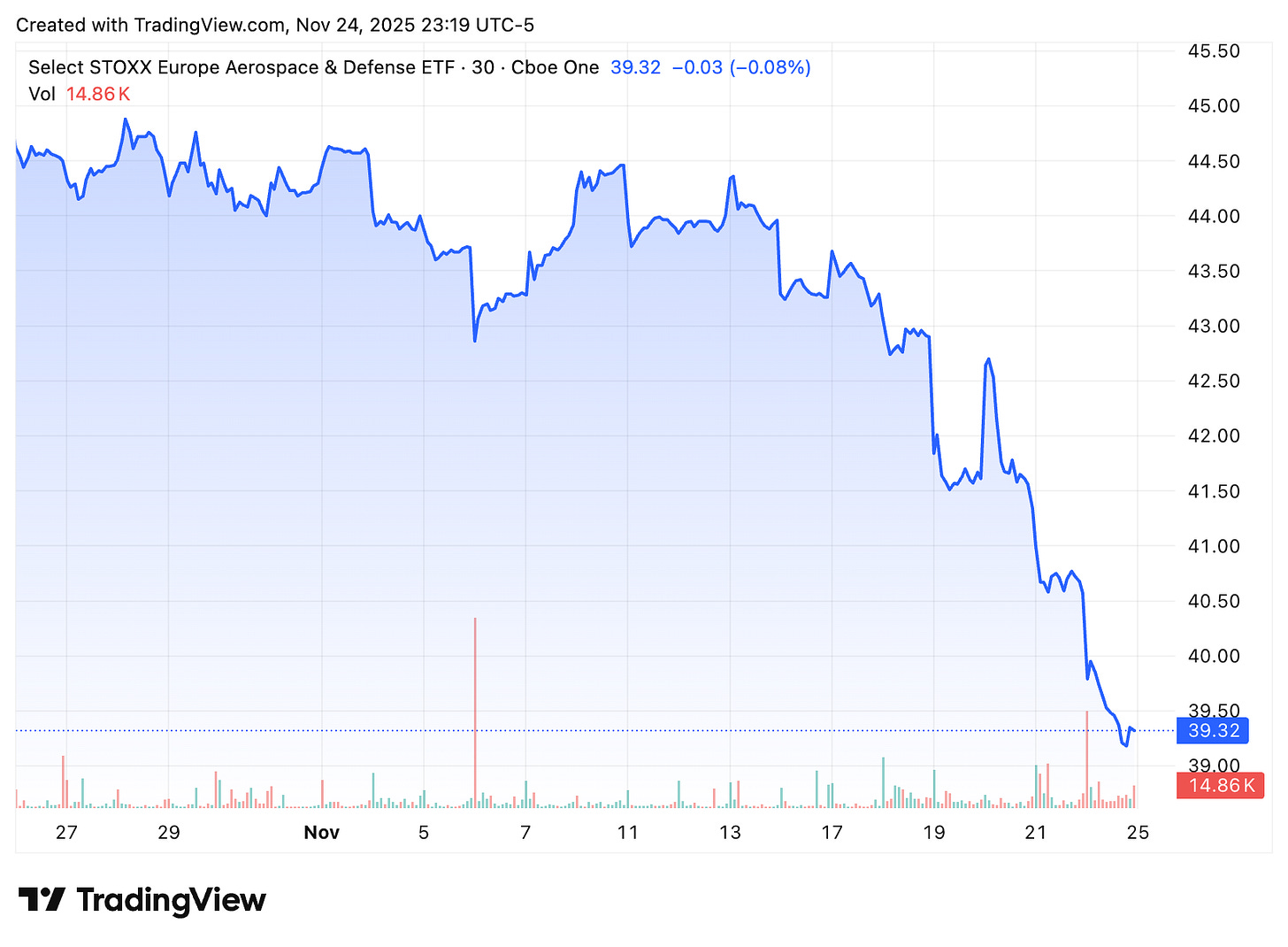
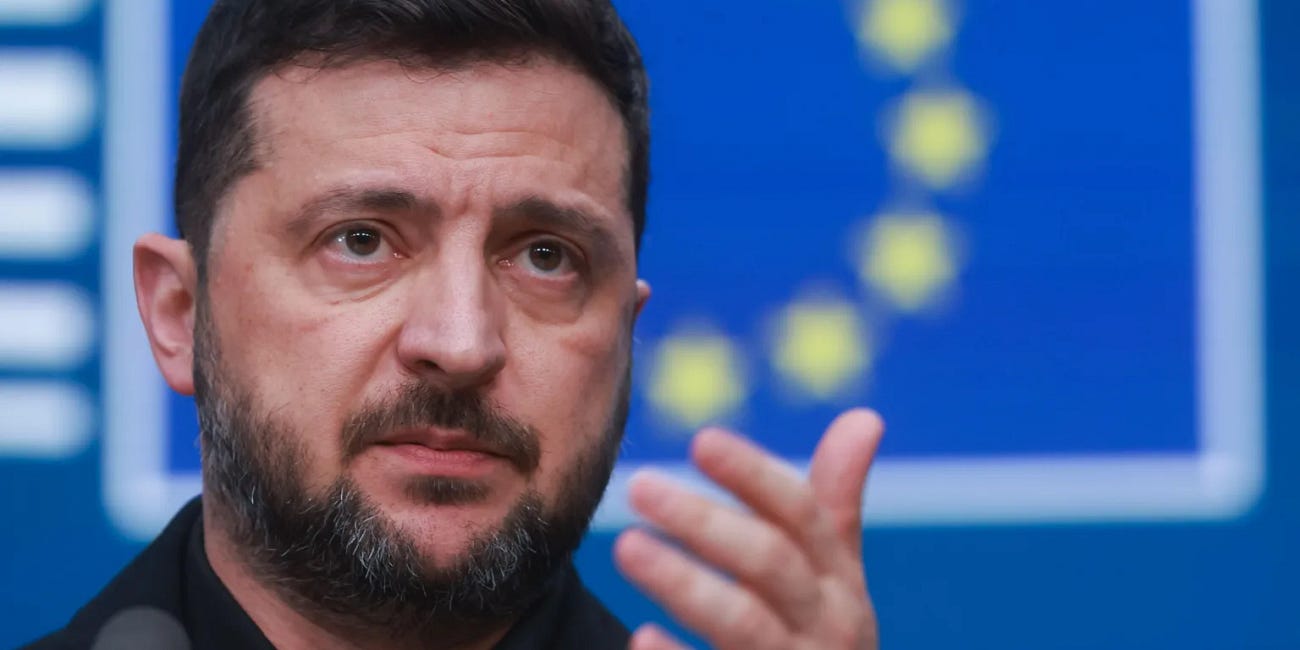


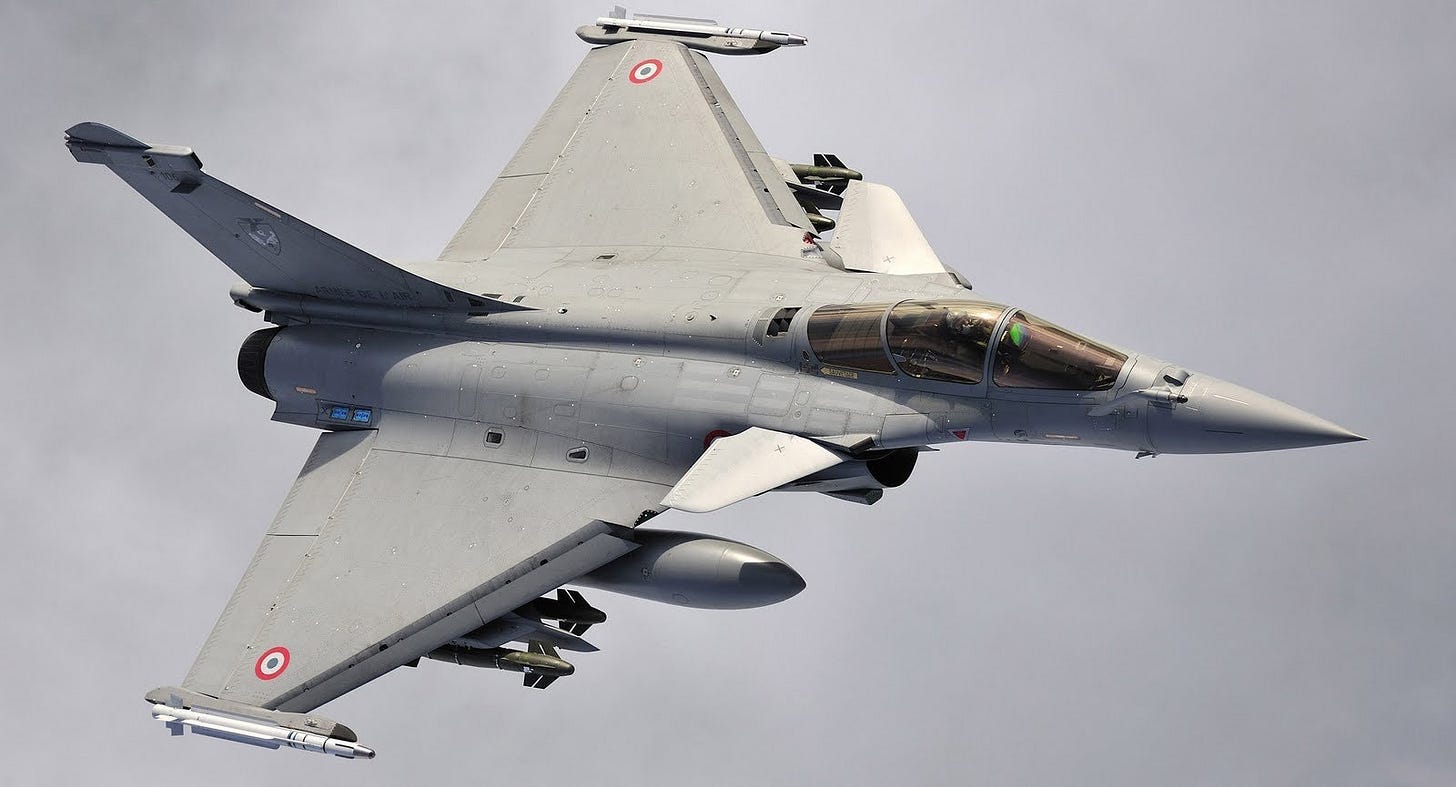
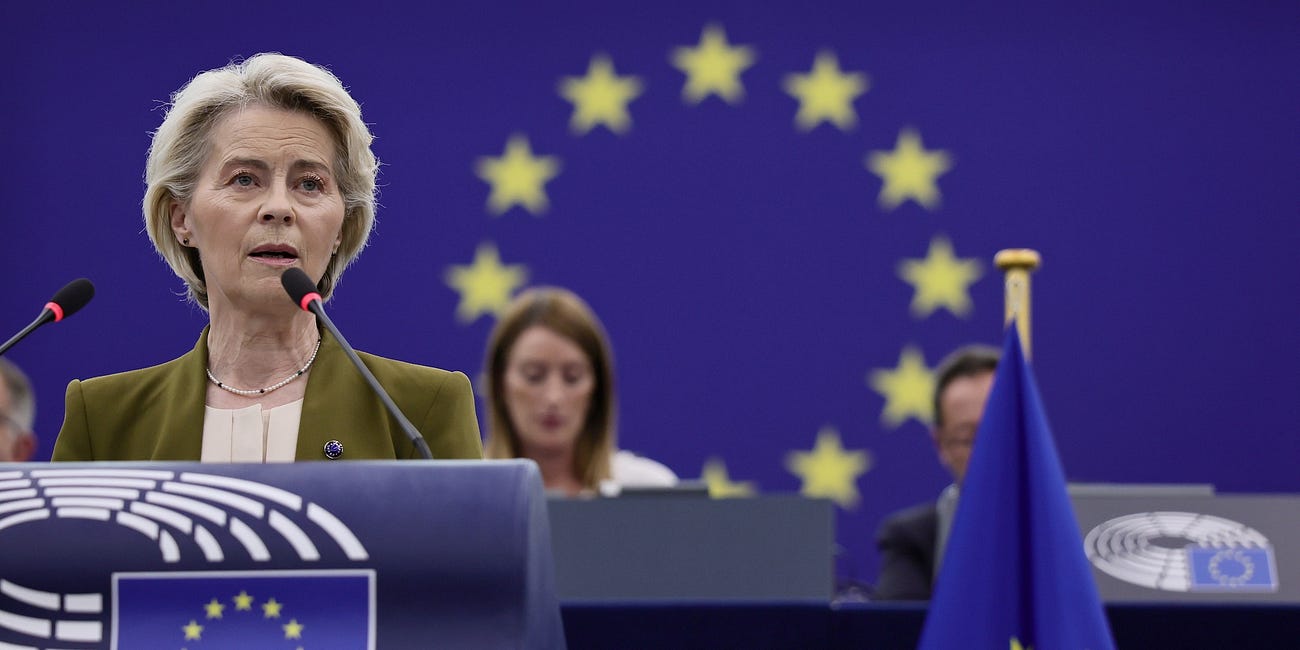

Russia is doing a great job of demilitarization of the Arrogant West, I hope the deNazieficiation efforts are equally successful.
My dad Vlad spoke of demilitarization and deNaziefication , we can only hope for the continued success of said efforts....